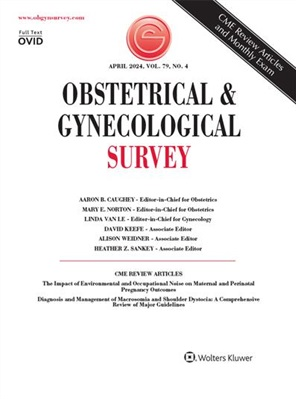Human Embryo Live Imaging Reveals Nuclear DNA Shedding During Blastocyst Expansion and Biopsy
IF 3.6
4区 医学
Q1 OBSTETRICS & GYNECOLOGY
引用次数: 0
Abstract
ABSTRACT The proportion of babies born from in vitro fertilization (IVF) is rising at an exponential rate, highlighting the importance that we have a comprehensive understanding of human preimplantation development and determinants of embryo quality. The early divisions of the embryo after fertilization but before implantation and resulting mitotic errors have been studied primarily in the mouse embryo; however, thus far we have lacked the technology to characterize these critical steps in humans. Establishing an approach that can bypass genetic manipulation and microinjections of DNA or mRNA into human embryos would allow us to better uncover the processes patterning preimplantation human development. This study aimed to evaluate human blastocyst preimplantation development with noninvasive imaging using membrane permeable fluorescent dyes. First, the dyes SPY650-DNA, which labels genomic DNA, and SPY555-actin, which labels F-actin, were validated in the mouse embryo where they produced high contrast labelling with similar results to microinjection of fluorescent mRNAs and produced offspring at a similar rate to nondyed control embryos. Live imaging data using these dyes enabled 3-dimensional scans of the embryo at 5- to 10-minute intervals of the following central events during preimplantation development: the main phases of mitosis, visualizing the major changes in cell shape that characterize embryo compaction at the 8-cell stage, detecting cell polarization at the 8-cell stage, establishing apical F-actin rings at the 16-cell stage, tracking the expansion and zippering of F-actin rings, detecting the first internalized cells within the 16-cell embryo, and visualizing blastocyst expansion and hatching from the zona pellucida. Cleavage-stage human IVF embryos were then studied using the fluorescent dyes to track early cellular and morphogenetic processes. Early cell-cycle dynamics and mitotic stages revealed that the duration of human mitosis is similar to that of mice, but interphase is 27% ± 4% longer in humans (16.1 ± 0.9 vs 12.7 ± 0.4 hours; P < 0.01). Using live imaging, compaction dynamics such as increased cell-cell contact and angle between apical membranes with a decrease in cell sphericity were observed beginning at the 12-cell stage and differed significantly from development in mice. In comparison to mice, human compaction was found to be more asynchronous and did not have clear links to apical polarization or inner-outer segregation. Next, chromosomal segregation was analyzed to determine if this approach allowed detection of segregation errors in the human embryo leading to aneuploidy. Lagging chromosomes detected in human embryos using SPY-DNA appeared morphologically similar to those found in mouse embryos and had similar segregation dynamics. During blastocyst expansion, a subset of trophectoderm cell nuclei forms protruding bud-like that is shed into cytoplasm producing cytoplasmic DNA structures (cytDNA), suggesting an additional process of DNA loss different from chromosome segregation errors during mitosis. A perinuclear keratin network developing at the early cavitation stage appears to protect from formation of cytDNA structures, and the mechanical stress of blastocyst expansion appeared to disrupt the keratin network in certain cells, increasing DNA shedding. Next, trophectoderm biopsy was conducted in mouse, and human embryos to determine if the mechanical stress would increase DNA shedding. Biopsy of human blastocysts resulted in a significant increase in nuclear budding (6.0% vs 0.70%; P = 0.0022), suggesting a link between mechanical stress and DNA shedding. This study demonstrates the use of fluorescent dyes and live imaging in characterization of key cellular and morphogenetic processes patterning the preimplantation human embryo and describes a process of DNA shedding in response to mechanical stressors that warrants future research.人类胚胎实时成像揭示囊胚扩张和活检过程中的核DNA脱落
通过体外受精(IVF)出生的婴儿比例正以指数速度上升,这凸显了我们对人类着床前发育和胚胎质量决定因素有全面了解的重要性。胚胎在受精后着床前的早期分裂以及由此产生的有丝分裂错误主要在小鼠胚胎中进行了研究;然而,到目前为止,我们还缺乏描述人类这些关键步骤的技术。建立一种可以绕过基因操作和向人类胚胎中微量注射DNA或mRNA的方法,将使我们能够更好地揭示胚胎植入前人类发育的过程。本研究旨在利用膜透性荧光染料无创成像技术评价人胚泡着床前发育。首先,标记基因组DNA的染料SPY650-DNA和标记f -肌动蛋白的染料SPY555-actin在小鼠胚胎中得到验证,它们产生的高对比度标记与显微注射荧光mrna的结果相似,并且产生后代的速度与未染色的对照胚胎相似。使用这些染料的实时成像数据可以在胚胎着床前发育期间每隔5到10分钟对以下中心事件进行三维扫描:有丝分裂的主要阶段,在8细胞阶段观察表征胚胎压实的细胞形状的主要变化,在8细胞阶段检测细胞极化,在16细胞阶段建立顶端的f -肌动蛋白环,跟踪f -肌动蛋白环的扩张和收缩,在16细胞胚胎中检测第一个内化细胞,并观察囊胚从透明带扩张和孵化。然后使用荧光染料跟踪早期细胞和形态发生过程研究卵裂期人类体外受精胚胎。早期细胞周期动力学和有丝分裂阶段显示,人类有丝分裂的持续时间与小鼠相似,但间期比小鼠长27%±4%(16.1±0.9 vs 12.7±0.4小时);P & lt;0.01)。通过实时成像,从12个细胞阶段开始观察到细胞接触增加、细胞顶膜之间角度增加、细胞球形度降低等压实动力学,这与小鼠的发育有很大不同。与小鼠相比,人类的压实更不同步,与根尖极化或内外分离没有明确的联系。接下来,对染色体分离进行分析,以确定这种方法是否允许检测人类胚胎中导致非整倍体的分离错误。利用SPY-DNA在人类胚胎中检测到的滞后染色体在形态上与在小鼠胚胎中发现的染色体相似,并且具有相似的分离动力学。在囊胚扩增过程中,滋养外胚层细胞核的一部分形成突出的芽状,并脱落到细胞质中,产生细胞质DNA结构(cytDNA),这表明有丝分裂过程中存在不同于染色体分离错误的DNA丢失过程。在早期空化阶段形成的核周角蛋白网络似乎可以保护细胞DNA结构的形成,而囊胚膨胀的机械应力似乎会破坏某些细胞中的角蛋白网络,增加DNA脱落。接下来,在小鼠和人类胚胎中进行了滋养外胚层活检,以确定机械应力是否会增加DNA脱落。人囊胚活检导致核出芽显著增加(6.0% vs 0.70%;P = 0.0022),这表明机械应力和DNA脱落之间存在联系。本研究展示了荧光染料和实时成像在人类胚胎着床前关键细胞和形态发生过程表征中的应用,并描述了机械应激反应中DNA脱落的过程,这值得未来的研究。
本文章由计算机程序翻译,如有差异,请以英文原文为准。
求助全文
约1分钟内获得全文
求助全文
来源期刊
CiteScore
2.70
自引率
3.20%
发文量
245
审稿时长
>12 weeks
期刊介绍:
Each monthly issue of Obstetrical & Gynecological Survey presents summaries of the most timely and clinically relevant research being published worldwide. These concise, easy-to-read summaries provide expert insight into how to apply the latest research to patient care. The accompanying editorial commentary puts the studies into perspective and supplies authoritative guidance. The result is a valuable, time-saving resource for busy clinicians.

 求助内容:
求助内容: 应助结果提醒方式:
应助结果提醒方式:


